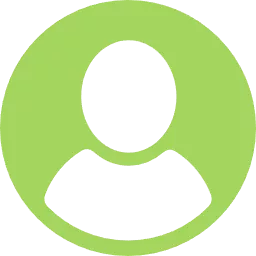How Can I Use an SBA Loan?
By Jason Lavender and Leslie Rhodes
If there had been any small business owners left who hadn't heard about the Small Business Administration (SBA) and their SBA loans, 2020-21 likely changed that.
The global pandemic brought the SBA's loan programs to the forefront of the conversation thanks to the Coronavirus Aid, Relief, and Economic Security Act (also called the CARES Act). This $2.2 trillion stimulus bill created new loan programs, administered by the SBA, to provide economic relief to businesses impacted by the pandemic.
Since it was signed into law on March 27, 2020, the CARES Act and subsequent stimulus packages have made acronyms like PPP (Paycheck Protection Program) and EIDL (Economic Injury Disaster Loan) a part of our everyday vocabulary.
But SBA Loans have been a big part of the small business funding ecosystem for much longer than the COVID-19 pandemic. Today we're breaking down a few of the different types of SBA funds that small businesses in Central Texas may be eligible for. We’ll also help clarify how those funds can— and cannot— be used.

What is an SBA Loan?
Despite the name, a Small Business Administration Loan is not actually a loan funded by the SBA.
Borrowers of SBA loans do not make their loan payments directly to the SBA. Instead, they make payments to a network of commercial lenders curated by the SBA. These include local and national banks or credit unions, including TFNB.
The SBA acts as something of a loan matchmaker. It gives banks the government's guarantee for loans, promising to pay back 90% of any loss in the event a borrower defaults. This guarantee mitigates some of the risk acquired by the lender and improves a small business's chance of getting approved for the funding they need.
One thing that makes SBA loans so attractive to small businesses? Favorable terms compared to traditional lending.
Because the SBA guarantees a percentage of the loan, lenders can offer lower interest rates and more favorable repayment terms. It’s what usually makes SBA loans a win-win for both the lender and the small business.
SBA loans can range from as little as $500 to upwards of $5 million. But, not all SBA loans are created equal; there are different types of loans designed to meet different small business needs.
Let’s go over the most common types:General Small Business Loans: 7(a)
7(a) loans are perhaps the most well-known among the SBA's loan programs — second only to special pandemic relief aid, that is. The 7(a) loan program is ideal for small businesses with special requirements. It is most often used in the case of a business purchase involving real estate.
7(a) SBA loans can be used for:
- Short-term working capital
- Long-term working capital
- Purchasing supplies, fixtures, and furniture
- Revolving funds based on the value of receivables and inventory
- The purchase of land, buildings, and other real estate
- Construction or renovation
- Opening a new business or acquiring an existing one
- Expanding an existing business
- Refinancing business debt
- are a for-profit entity
- meet the SBA's definition of a small business
- have a reasonable amount of invested equity
- and demonstrate that the loan is needed (among other requirements)
SBA Microloan Program
SBA microloans are used primarily for start-up and expansion costs and, on average, are issued in the amount of about $13,000.
What SBA Microloans can be used for:
- Working capital
- Supplies
- Inventory
- Furniture and fixtures
- Equipment and machinery
- Rebuilding
- Re-opening
- Repairs
- Business enhancements or improvements
SBA Microloans cannot be used for purchasing real estate or paying down existing business debts.
504 Loans
Also called Real Estate & Equipment Loans, the SBA's CDC/504 Loan program is designed to provide financing up to $5 million for fixed assets that promote job creation and business growth.
These are long-term, fixed-rate loans available through Certified Development Companies (CDC's). CDC's are certified and regulated by the SBA and act as community partners regulating nonprofits and working to promote economic development within a specific area.
Businesses who wish to seek funding from a 504 loan must meet additional income and net worth requirements. Specifically, they must have a net worth of less than $15 million and an average net income of less than $5 million.
Additional requirements also apply, such as a solid business plan, demonstrably qualified management, good character, and a reasonable ability to repay the funds.
How can SBA 504 loans be used?
- Assets that promote job creation and growth
- Existing buildings
- Existing land
- New facilities
- Machinery and equipment
- Improvement of utilities, parking lots, landscaping, and other existing facilities
504 loans cannot be used for working capital, inventory, repaying, refinancing, or consolidating debt, speculation, and real estate investment.
Disaster Loans
Disaster relief loans serve as a low-interest source of funding for not only businesses of all sizes but also individuals, homeowners, and renters.
These loans come in a variety of forms, including personal property and home loans, business disaster loans, economic injury loans, and even loans for economic injury to military reservists.
EIDL
The most common of these is the Economic Injury Disaster Loan (EIDL) program. This program has been a lifeline for small businesses, agricultural cooperatives, and private nonprofit organizations during the COVID-19 pandemic.
In order to receive an EIDL loan, businesses must have experienced a significant financial injury as a result of the disaster and be unable to meet their financial obligations or pay necessary operating expenses.
Economic Injury Disaster Loans can be issued for up to $2 million.
The EIDL loan is one of the most flexible loan programs, and funds can be used to cover day-to-day expenses like:
- Office supplies
- Inventory
- Accounts payable
- Utilities
- Rent
- Business and merchant fees
- Professional services like accountants and bookkeepers
- Web hosting
- And other day-to-day expenses
It's important to note that businesses that also received a Payment Protection Program (PPP) Loan cannot use their EIDL funds to cover the same set of expenses as the PPP loan. In other words, you must first use up your PPP funds before spending your EIDL funds on things like payroll, rent, mortgage interest, or utilities since those are specifically covered as part of the PPP loan.
While EIDL funds can be used to cover loan and credit card payments, borrowers may not pay the entire amount of their credit card or loan debt with EIDL funds. The SBA considers that to be refinancing, which is not an approved use of EIDL funds.
Additionally, EIDL funds cannot be used to pay:
- Bonuses
- Dividends
- Draws and distributions to owners (except in specific situations)
- Repayment of stockholder/principal loans
- Facility expansion
- Fixed asset acquisition
- Repair of physical damage
- Federal loan repayment
- Relocation
Paycheck Protection Program (PPP)
The Paycheck Protection Program (PPP) has become a part of our new vocabulary since the onset of the pandemic in 2020. Thanks to this SBA-administered loan program, countless businesses have been able to keep staff on payroll: as of May 2, 2021, over 10,784,438 loans have been approved with a net dollar amount of $780,473,244,140.
The sole purpose of the PPP loan program is to keep the workforce employed during the pandemic. It acts as an incentive for small businesses to maintain an active payroll.
PPP Funds can be used for:
- Salaries and wages
- Tips
- Commissions
- Paid leave
- Other benefits like family, medical or sick leave, and vacation
- Separation pay
- Hazard pay
- Employee benefits like retirement contributions
- Back pay within a 24-week period
- Payroll expenses associated with newly hired employees
- Utilities
- Operations expenses like software, payroll, sales, billing, and bookkeeping services
- Supplier costs
- Worker protection expenses
Like most SBA loans, there are certain things your PPP funds cannot be used to cover. These include expenses like credit card balances or other forms of debt, mortgage interest, contractor pay, self-pay (except in the case of certain self-employed individuals)
To date, there have been two rounds of PPP funding, called First Draw and Second Draw, respectively. To further incentivize business owners to maintain their payroll, a portion of your PPP loan may even be forgivable.
According to the SBA, "First Draw PPP loans made to eligible borrowers qualify for full loan forgiveness if during the 8- to 24-week covered period following loan disbursement:
- Employee and compensation levels are maintained.
- The loan proceeds are spent on payroll costs and other eligible expenses; and
- At least 60% of the proceeds are spent on payroll costs."

How to Get an SBA Loan in Waco, Texas
That was a lot of information about SBA loans and (we know) it’s probably a little confusing. Fortunately, if you own a small business in Central Texas or are looking to start one, you don’t need to navigate the SBA loan process by yourself.
As the only SBA preferred lender headquartered in McLennan County, we help you decide what type of loan will work for you and then we help you apply. Our long-standing relationship with the SBA helps us expedite your loan process and avoid the back-and-forth that can delay much-needed capital for your business.
For Waco SBA loans, traditional business loans, or just about any other financial services for your small business, contact TFNB. Or, better yet, visit us at one of our locations in Waco or McGregor.
About the Authors: Jason Lavender is the Senior Vice President and Director of Strategic Initiatives at TFNB Your Bank for Life. Leslie Rhodes is a Bank Officer and SBA Loan Servicing Specialist.
If you have any questions or would like to know more about our banking solutions, contact us at 1-800-264-4274
Learn MoreShare On




